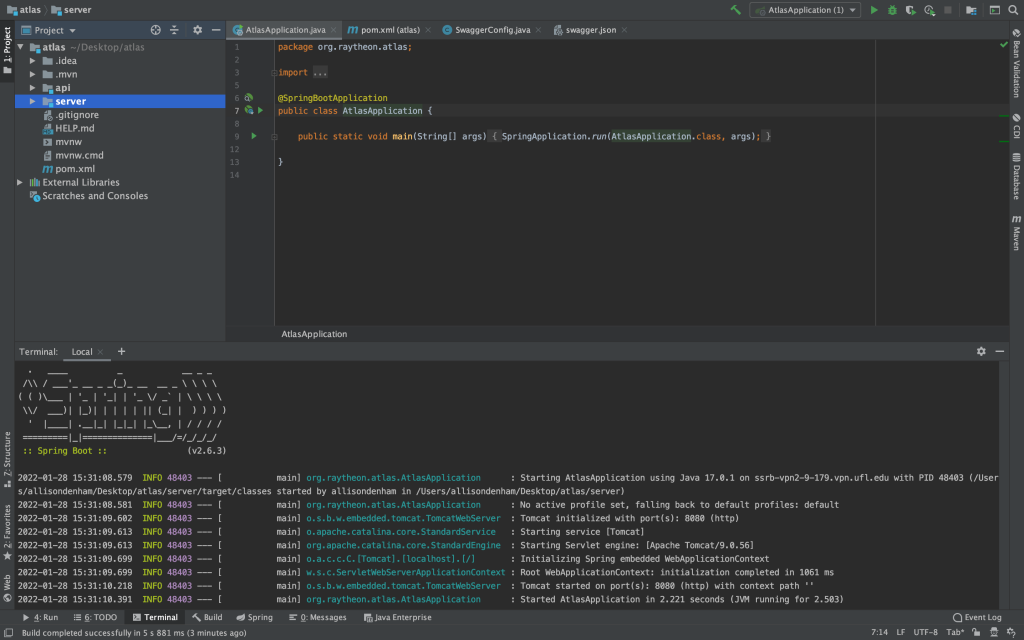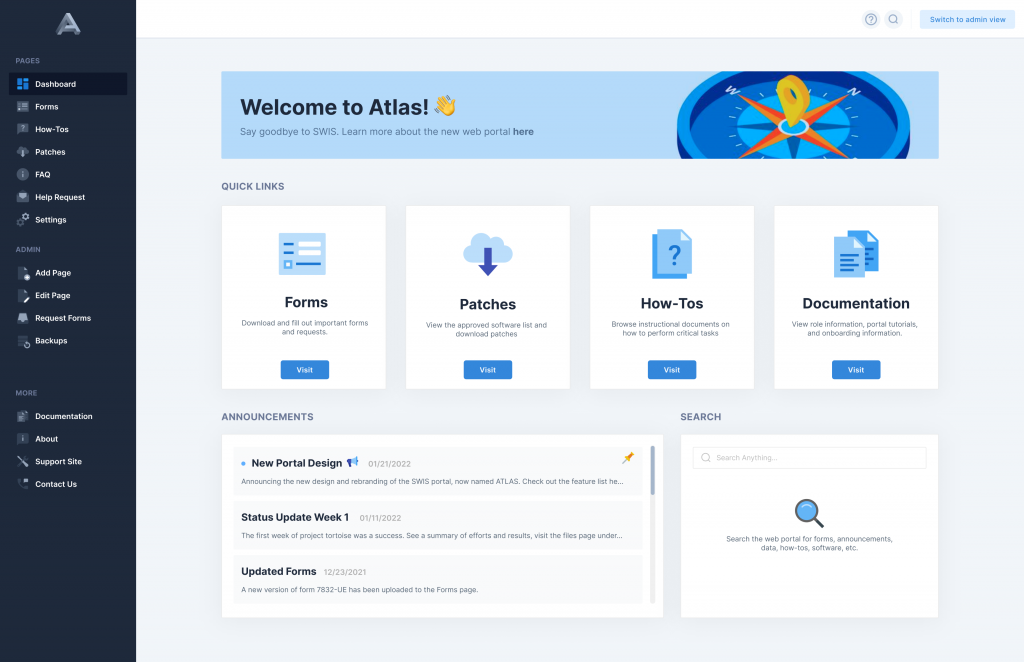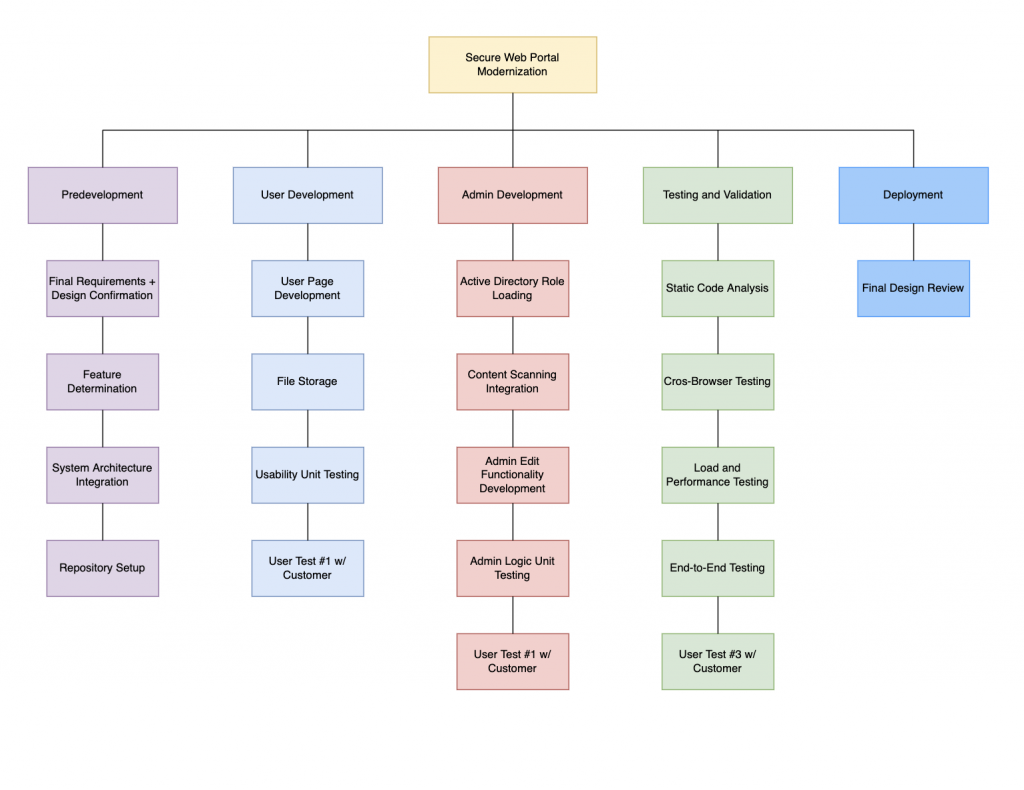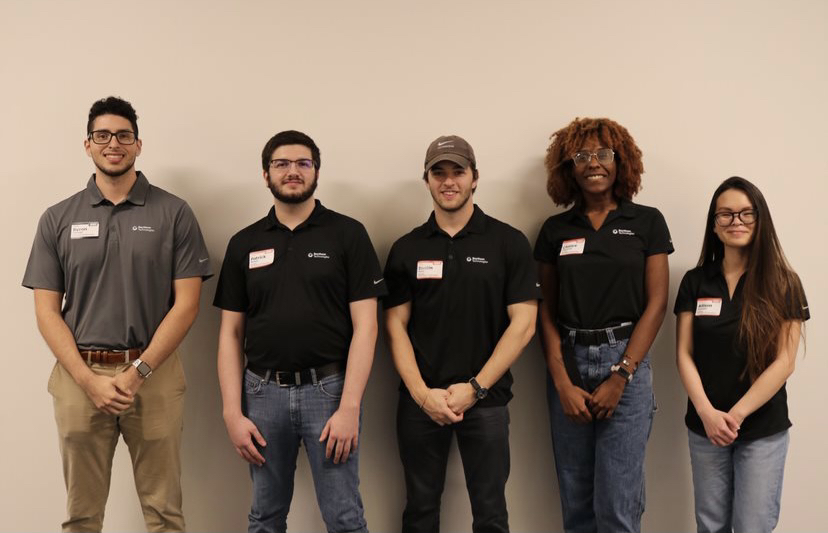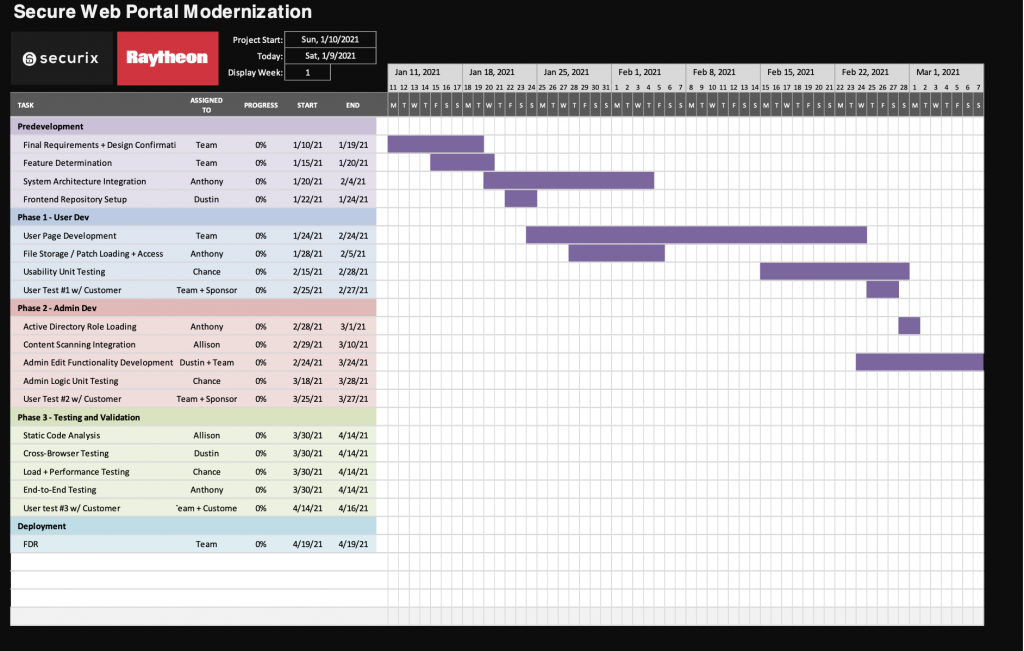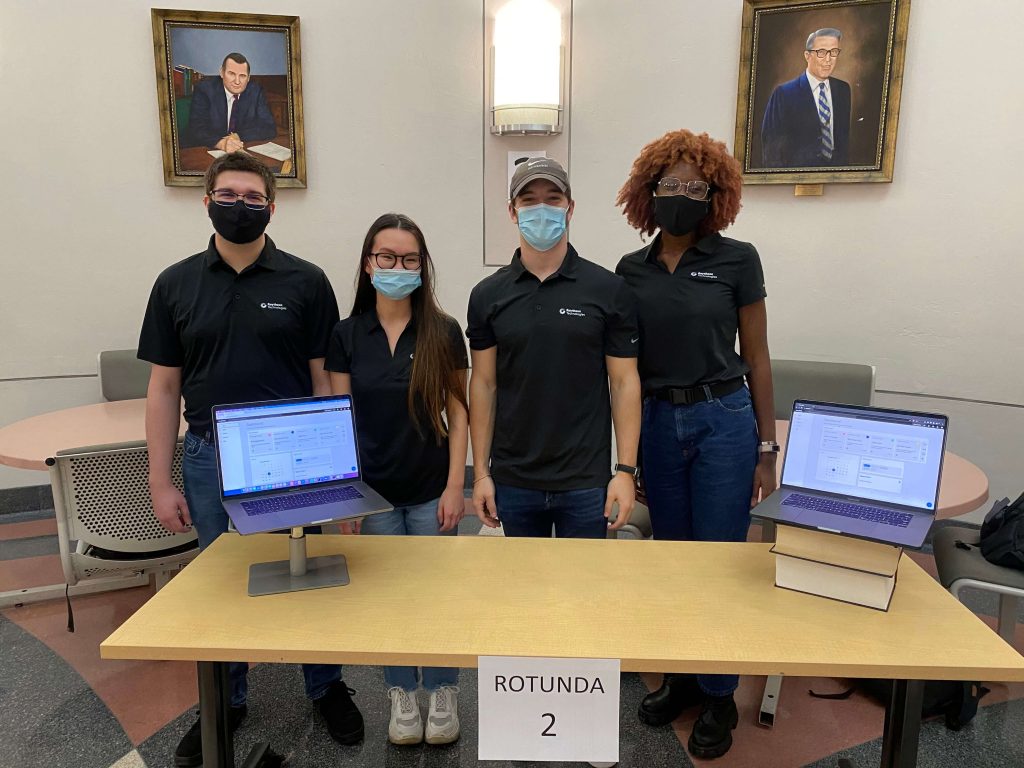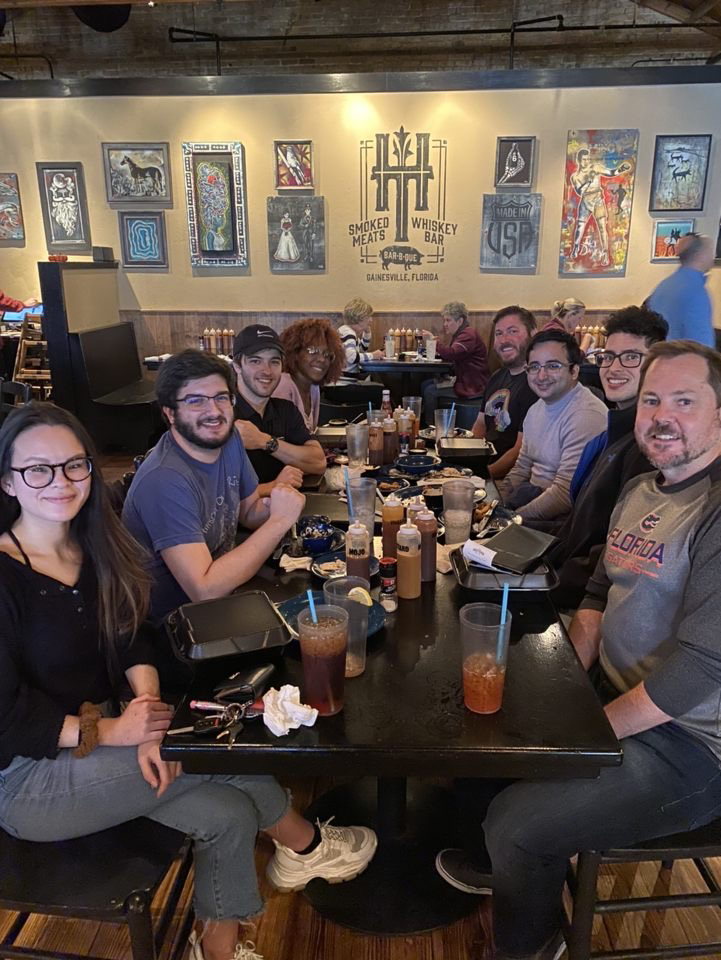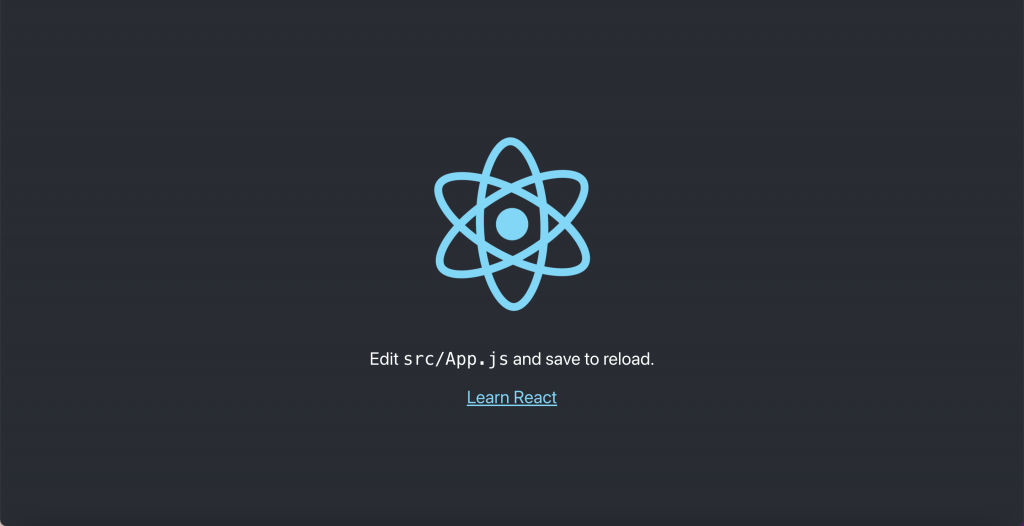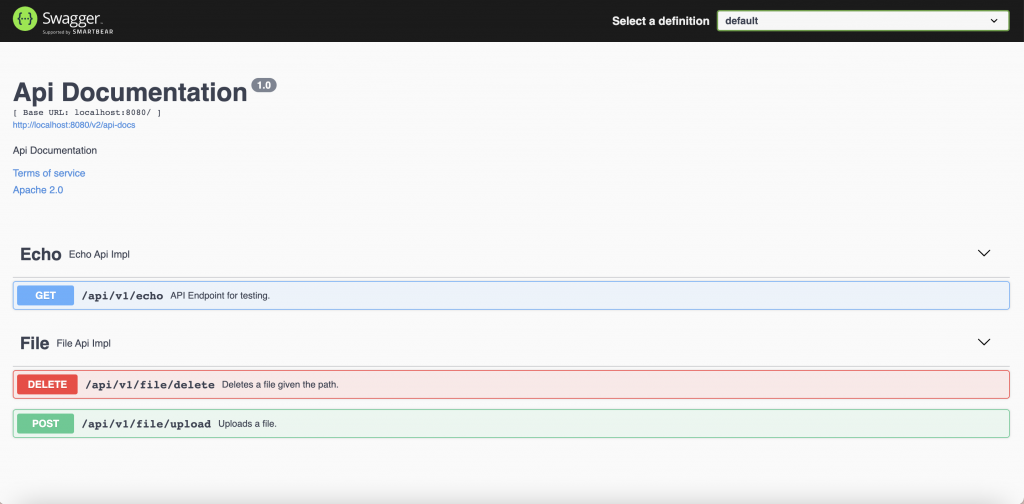
This week, the team spent most of our time continuing to develop the web portal. After setting up the backend repository with Swagger and Spring Boot we spent this week writing endpoints for file uploads and deletion, and started setting up authentication services that will eventually be integrated with Microsoft Active Directory. On the frontend, we used TypeScript to set up a universal header for the web portal where the user can access search functionality, a help button, and profile subcomponents. We also created a general page template and began development on the dashboard, the first page the user will see when they log onto the web portal. The plan for next week is to continue developing API endpoints for software uploads and page content edits, as well as begin frontend testing with React Testing Library and Jest. We will also integrate a continuous integration/continuous delivery pipeline into our GitHub repositories and start our Final Design Review report outline.
